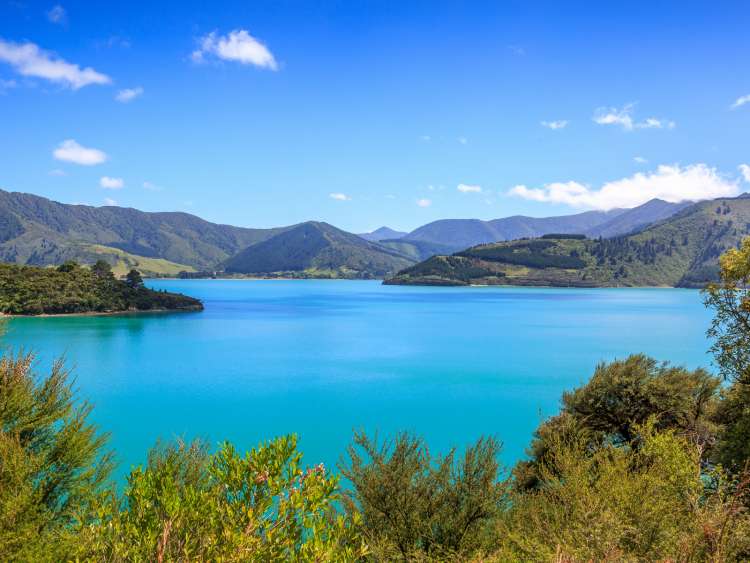
Queen Charlotte Sound, New Zealand (Scenic Cruising) cruises
Queen Charlotte Sound port guide
Known in Māori as Tōtaranui, Queen Charlotte Sound is an extraordinary site of natural beauty. Rolling hillsides. Tranquil waters. Lush green native bushland. The scenery here is just begging to be photographed.
A cruise-by port, taking in Queen Charlotte Sound from the decks of your Cunard Queen brings a chance to truly absorb the majesty of your surroundings.
Top landmarks and sights in Queen Charlotte Sound
Queen Charlotte Sound is the most well-known of the Marlborough Sounds. It’s the furthest east and was historically part of an important trade route between the North and South Islands.
The area is home to acres of bushland, deep bays, and enigmatic coves that provoke the imagination. One of the most notable landmarks is Ship Cove, a favorite bay of infamous British explorer, Captain James Cook. It’s thought that Cook spent weeks at a time here during his voyages, for ship repairs, rest, and fresh food and water.
The island at the top of Queen Charlotte Sound is Motuara Island. At only around 150 acres, the island is only called home by a wonderful variety of wildlife. As you pass, keep a look out for birds such as the gray warbler, bellbird, kererū, and tūī, and perhaps spot more rare species including saddleback and yellow-crowned parakeet.
Things to do in Queen Charlotte Sound
As you sail the peaceful waters of Queen Charlotte Sound, it’s easy to simply enjoy time spent out on deck unwinding. Let the breeze and the sounds of far-off wildlife wash over you as you sit back, perhaps with a signature Cunard cocktail in hand, and breathe it all in. Cruise-by destinations such as this are a marvelous gift of time, when you can savor the joy of doing nothing, free of life’s everyday responsibilities.
You may find yourself eagerly peering out towards the shore in the hopes of spotting wildlife in the native bush, or overhead in the skies. The sound itself is home to dolphins, orcas, stingrays, and penguins, so don’t forget to keep an eye on the water around you too. If wildlife-watching appeals, be sure to pack binoculars and perhaps photography equipment so you can capture all you see.
Queen Charlotte Sound culture and history
Queen Charlotte Sound was named as such by Captain James Cook, after he discovered it in 1770. It’s said Cook climbed to the summit of a hill on Motuara Island, noticed the sea passage, and declared the entire area in the name of the British Empire. He named the waters after the wife of King George III, Queen Consort Charlotte of Mecklenburg-Strelitz.
Through the 19th and early 20th century, Queen Charlotte Sound was known for whaling, but before European settlement the entire region was part of an important trading route between New Zealand’s North and South Islands. The trade of pakohe (argillite stone), found in D’Urville Island was especially prominent, for its use in making cutting tools such as adzes.
Perhaps, as your Cunard Queen makes her way through the sound, ponder the lives of those who flourished here in years gone by, from native tribespeople to European colonists.
Top tips for Queen Charlotte Sound
Weather
This part of the world tends to see year-round temperate weather. The winter months of June to August are the coolest, at roughly 12 degrees Celsius, and the summer months of December to February average around 19 degrees Celsius. Spring (September to November) is the wettest period, but still, it does not rain for more than around seven days per month.